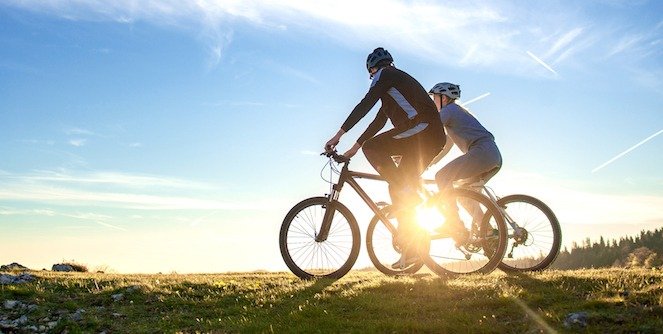
What is rucking?
Rucking is the simple act of taking extra weight along for a walk. It has evolved out of hiking, and it is a fantastic way to add more intense cardiovascular exercise to your routine while enjoying all the benefits of walking. Because we are so used to handling our own body weight, regular walking tends to become easier and easier, which means that over time it has less of a positive impact on your heart and lungs. For most people, the logical step to increase intensity is to switch to jogging. Unfortunately, running puts a large amount of strain on your joints, and the jump in output can be very difficult to handle. Rucking solves this problem.
Rucking’s biggest benefit
Carrying extra weights makes walking considerably harder. Just starting with an extra 10 or 15 pounds will be noticeably more difficult. As you get stronger, you can add more weight. The biggest benefit of this is that you have turned walking into a progressive overload exercise, just like weight training. This allows you to keep improving your heart, lungs and arteries with an exercise that’s safe, low impact and enjoyable!
How to get into rucking
The best way to add weight to your walks is to get a backpack and put some dumbbells or plates into it. There is a whole industry around rucking backpacks and weights for them, but they are a pricey option. A regular backpack and some cheap, used 5- and 10-pound weights will do.
Start by placing a few towels (that you don’t mind getting rusty) at the bottom of the bag, then the weights, then another towel or two around and on top to keep them from moving. Keep the bag on your mid-back, not down by your hips while walking. A wider strap will help keep your shoulders more comfortable.
If you don’t have weights, you can use cans of tomatoes, bottles of water or similar objects.
A beginner rucking program
Since you don’t know how you will react to carrying extra weight around, I recommend starting with a short walk, no more than 30 minutes. Start with 5 pounds (2.5 kilograms) in your bag. Make sure your blood sugar level is in range for cardiovascular exercise before you begin. If you have a heart rate monitor, while you are rucking, you want your heart rate to be about 5 to 10 beats above your regular walking rate, no more.
The goal of any program should be to increase your volume of training very slowly. Volume is the intensity (or difficulty) of your chosen exercise times the amount of time you spend doing it. If you can increase the volume of your exercise without getting substantially more tired, it means that you are making progress! With rucking, you can either increase the weight in your pack or the time per session, or both simultaneously.
What often confuses people is the rate of increase of their training volume. You should aim for a slow increase that is safe but challenging.
Here’s a good 8-week introductory plan if you are walking 3 to 4 times in a week:
| Weeks | Weight in ruck (pounds) | Distance (kilometres) |
| 1 | 5 | 3 |
| 2 | 5 | 4 |
| 3 | 5 | 5 |
| 4 | 10 | 4 |
| 5 | 10 | 5 |
| 6 | 10 | 6 |
| 7 | 15 | 5 |
| 8 | 15 | 6 |
As you notice, when the weight goes up, you drop your distance a bit to accommodate. This table is a good general recommendation for most beginners, but if you feel comfortable pushing the volume faster, go for it.
Workout variations
Once you have a bit of experience and conditioning with a ruck, you can mix up your workouts. For example, you can go with a heavier pack and shorter distance for a good power workout on Monday and follow that with a lightly loaded hike in the forest for a couple of hours later in the week.
A few things to consider
Sometimes when you start a new exercise program,the targeted tissues (in this case the cardiovascular system) may not be the weak point. A few weeks into your program, you might notice that your ankles, calves, hips or shoulders are starting to ache. You have to pay attention to these early warning signs of overload. Often, taking a break for a few days is the best thing you can do to give your body time to fully recover. You’ll feel stronger when you hit the trails again!



